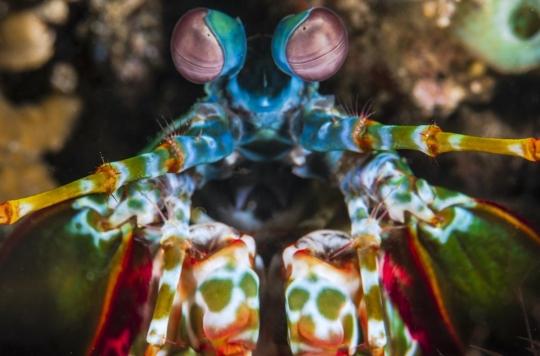What if we were inspired by nature, and more particularly marine fauna, to develop new medical techniques? This is the surprising and ingenious parallel that we draw from doctors at the University of Illinois (United States). The latter have designed an infrared camera capable of detecting almost as many colors as mantis shrimps.

- In France, cancer is the leading cause of death in men and the second in women.
- In 2015, it is estimated in mainland France that approximately 41% of cancers in people over 30 were attributable to modifiable risk factors.
Develop a camera “near infrared light” with visual abilities close to those of mantis shrimps. Also known as squills, these super shrimps inhabit Indo-Pacific waters and can measure over 38cm in length. But above all, their retina is endowed with many photoreceptor cells, much more than in humans. “The Mantis Shrimp has amazing eyes. She perceives up to 12 colors and can therefore see things that humans cannot imagine“, develops Steven Blair, principal investigator of a new study, published in the journal Science Translational Medicine.
A new infrared camera technique
The work describes a new infrared camera technique for cancer surgery. Directly inspired by the extraordinary visual faculties of squills, this device, which is both compact and lightweight, would make it possible to detect more colors during surgical procedures to remove cancerous tissue and minimize the risk of recurrence.
The technology developed by these researchers combines specialized optical filters and semiconductors. The camera can distinguish three colors of visible light and three colors of near infrared. Doctors then inject molecules that target cancerous tumors and that will glow with infrared. Cancer cells will then become easier to spot and remove.
Better treatment for head and neck cancer
A series of tests carried out on mice with the camera made it possible to effectively differentiate between healthy and cancerous tissues in 92% of cases. This technique could prove particularly valuable for head and neck cancer, where cancer cells are particularly difficult to detect (25 to 40% of affected patients undergo incomplete tumor removal operations).
The camera was also tested to visualize breast cancer in 18 patients, allowing surgeons to fully map lymph nodes near the tumor. “The combination of this bio-inspired camera and new tumor-targeting drugs will allow surgeons to leave no cancerous cells behind in the patient’s body“, explains Goran Kondov, surgeon and co-author of the study.These extra ‘eyes’ will help prevent disease recurrence, giving patients a faster and easier path to recovery. And the device can potentially be manufactured at low cost, making it accessible to hospitals around the world.” adds the surgeon.
.















